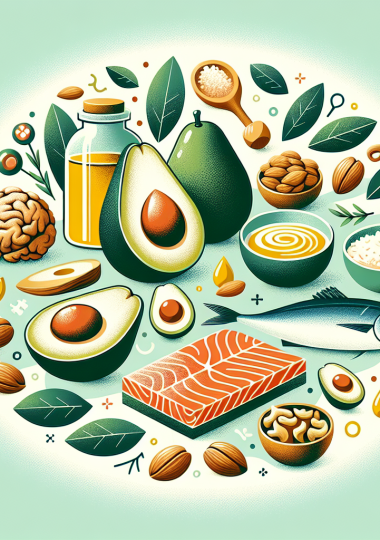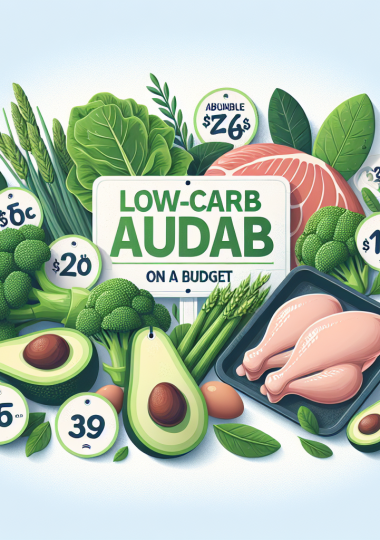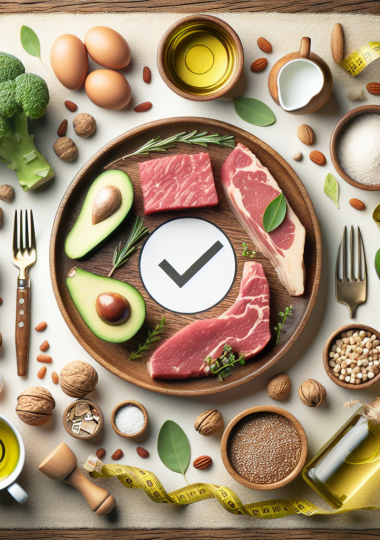“`html
Introduction to the Keto Diet
The ketogenic diet, commonly known as the keto diet, has gained significant popularity over the past decade due to its potential for rapid weight loss and other health benefits. At its core, the keto diet is a low-carbohydrate, high-fat eating plan that encourages the body to enter a metabolic state called ketosis. In ketosis, the body becomes highly efficient at burning fat for energy instead of relying on carbohydrates. This article will delve into the concept of mastering macros on the keto diet, simplifying the approach to make it accessible and effective for everyone.
Understanding Macros: The Basics
Macros, short for macronutrients, are the nutrients required in large amounts that provide energy: carbohydrates, proteins, and fats. Each macronutrient plays a distinct role in the body and is digested and metabolized differently.
– **Carbohydrates**: Typically the body’s primary source of energy. However, on the keto diet, carb intake is drastically reduced to encourage the body to burn fat for fuel.
– **Proteins**: Essential for building and repairing tissues, making enzymes and hormones, and supporting immune function. Protein intake on keto should be moderate, as excess protein can be converted into glucose, hindering ketosis.
– **Fats**: On the keto diet, fats become the main source of energy. Consuming healthy fats is crucial for maintaining energy levels and supporting bodily functions.
The Role of Macros in the Keto Diet
Achieving and maintaining ketosis requires a careful balance of macronutrients. The standard macronutrient breakdown for a keto diet is approximately 70-75% fat, 20-25% protein, and 5-10% carbohydrates. This distribution encourages the body to rely on fat for energy, thus initiating ketosis.
Understanding and tracking macros can be a game-changer for those committed to the keto lifestyle. It allows individuals to tailor their diet according to personal goals, whether it’s weight loss, muscle gain, or improved mental clarity.
Calculating Your Macros
To effectively follow a keto diet, it’s crucial to calculate your daily macronutrient needs based on your individual goals and lifestyle. Here’s a step-by-step guide on how to determine your macros:
1. Determine Your Caloric Needs
Start by calculating your Total Daily Energy Expenditure (TDEE), which is the number of calories your body needs to maintain its current weight. This can be done using online calculators that factor in your age, gender, weight, height, and activity level.
2. Set Your Macro Ratios
Once you have your TDEE, apply the standard keto macro ratios to allocate your daily calories into fats, proteins, and carbohydrates.
– **Fats**: Multiply your TDEE by 0.70 to 0.75 to determine your daily fat intake in calories.
– **Proteins**: Multiply your TDEE by 0.20 to 0.25 to find out how many calories should come from protein.
– **Carbohydrates**: Multiply your TDEE by 0.05 to 0.10 for your carb intake in calories.
3. Convert Calories to Grams
Since macronutrients are measured in grams, you’ll need to convert your calorie goals into grams.
– **Fat**: Divide your fat calories by 9 (since each gram of fat contains 9 calories).
– **Protein**: Divide your protein calories by 4 (each gram of protein contains 4 calories).
– **Carbohydrates**: Divide your carb calories by 4 (each gram of carbohydrates also contains 4 calories).
Choosing the Right Foods
Successfully following a keto diet means selecting foods that align with your macro goals and support ketosis. Here are some keto-friendly food options:
– **Fats**: Avocados, olive oil, coconut oil, butter, ghee, nuts, and seeds.
– **Proteins**: Meat, poultry, fish, eggs, and cheese.
– **Carbohydrates**: Leafy greens, cruciferous vegetables, and low-carb fruits like berries.
It’s essential to prioritize whole, unprocessed foods to ensure you’re getting the necessary nutrients without added sugars or unhealthy trans fats.
Common Mistakes and How to Avoid Them
Many people struggle with the keto diet initially due to common pitfalls. Here are some mistakes to avoid:
1. Not Tracking Macros
Failing to track your food intake can lead to an imbalance in macros, preventing ketosis or causing unwanted weight gain. Utilize apps or food diaries to stay on top of your macro consumption.
2. Overeating Protein
While protein is necessary, consuming too much can lead to gluconeogenesis, a process where excess protein is converted into glucose, potentially disrupting ketosis.
3. Neglecting Nutrient Density
Focusing solely on macronutrients can lead to nutrient deficiencies. Include a variety of nutrient-dense foods to ensure you’re meeting all your vitamin and mineral needs.
Adapting Macros for Different Goals
The beauty of the keto diet lies in its flexibility to accommodate different health and fitness goals. Here’s how you can adjust your macros for specific objectives:
1. Weight Loss
To lose weight, create a caloric deficit while maintaining the standard keto macro ratios. Monitor progress and adjust as needed based on your body’s response.
2. Muscle Gain
If building muscle is your goal, you may need to increase your protein intake slightly while still keeping carbs low and increasing overall calories.
3. Maintenance
Once you’ve reached your desired weight or fitness level, adjust your calorie intake to match your TDEE, keeping keto macro ratios intact to maintain ketosis.
Conclusion
Mastering macros on the keto diet involves understanding the crucial role that carbohydrates, proteins, and fats play in achieving ketosis and supporting overall health. By calculating and tracking your macros, choosing nutrient-dense foods, and avoiding common pitfalls, you can successfully navigate the keto lifestyle to reach your health and fitness goals. Remember, balance and consistency are key, and adapting your approach to fit your unique needs will lead to long-term success on the keto diet.
“`
This detailed article provides a comprehensive guide to understanding and mastering macros on the keto diet, from basic principles to practical applications, ensuring readers have the tools they need to succeed.









Add comment